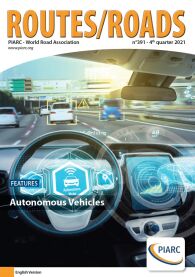Features
Security Vulnerabilities and Threats Related to CAV Deployment
The development of the new embedded and on roadside technologies, regardless of traffic type and driving area, have the potential to improve the traffic safety, to minimize the energy consumption, to reduce the pollution emissions, and to optimize the traffic performances. Moreover, the new mobility means have the capability to improve the equitability and allow a mobility access to disabled people. These benefits, however require well thought out implementation of the new services and functions in societies with minimum negative side effects. Thus, connected and automated vehicles (CAVs) offer a substantial potential to improve the operations and safety of transportation systems. However, the use of connectivity in CAVs introduces new risks in terms of safety. Indeed, CAVs involve the use of vehicle to vehicle (V2V) and vehicle to infrastructure (V2I) communications. These communications open additional system access points compared to traditional systems. These access points would make the mobility means and their technologies (embedded and on roadside) more vulnerable to specific attacks and could increase the impact of such cyberattacks.



